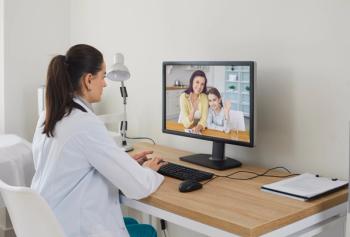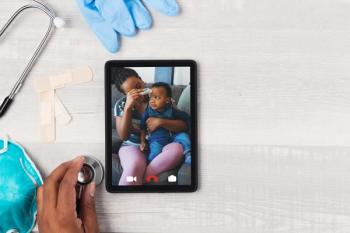
Making telehealth work in 5 steps
There are barriers to telehealth adoption that physicians must overcome to realize the technology’s promise.
Telehealth clearly has crossed a threshold of acceptance and now is viewed by physicians, payers and patients as an essential part of healthcare. It’s no surprise Fortune Business Insights
However, there are barriers to telehealth adoption that physicians must overcome to realize the technology’s promise. For starters, many healthcare delivery organizations still are in the early stages of building a delivery ecosystem that provides the right balance of virtual care and in-person services, and one that dynamically rebalances as consumer preferences shift. Calibrating the right mix of in-person and telehealth services for specific patient populations will be an ongoing challenge for physicians.
There are other challenges to physicians being able to fully optimize telehealth services for themselves and their patients. A significant amount of education will be required to make telehealth a seamless experience for patients who may not be digitally savvy or aware of their physician’s telehealth service options. Healthcare workers also must be trained to provide quality care virtually, which may entail learning how to use unfamiliar technologies.
What health IT leaders must do now
Health IT leaders charged with establishing an infrastructure for a vibrant telehealth practice can take five specific steps to improve their chances of success:
- Broaden their patient base – Offering telehealth services allows physicians to expand their reach beyond the patients living in local communities and regions. Virtual care services enable physicians to see patients no matter where they are located. This can make a big difference for patients in typically underserved rural areas who in recent years have gained access to better bandwidth. And for physicians, a larger population of patients should translate into increased revenue opportunities.
- Invest strategically – While many physicians did an admirable job in 2020 of quickly standing up telehealth services for their patients, these implementations often betrayed the haste with which they were deployed. For their telehealth initiatives to succeed in the long-term, physicians may need to radically overhaul their workflows and systems. Reassess any telehealth services and virtual home care programs begun during the pandemic and invest as needed to acquire the solutions that will help unify virtual care offerings and embed them into delivery models. Should hospitals opt to contract with third-party service physicians, the need for systems that can manage costs and quality across a network will be even more urgent.
- Build a dedicated Remote Patient Monitoring (RPM) program – RPM involves much more than giving patients a device and sending them home. Health IT leaders must build a technology and personnel infrastructure that supports the clinical care process and patient experience. Such an infrastructure will maximize reimbursement, streamline caregiver workloads and improve patient satisfaction. It should be the responsibility of the IT team to provide remote patients with the user tools that allow them to easily transmit data. This could be as simple as linking devices to the patient’s home Wi-Fi or installing a device recharging port that will automatically upload data. A physician’s IT team should ensure that the RPM program can collect both passive data – such as steps recorded by a digital pedometer – or active data. An example of the latter is when someone (the patient or caregiver) has to take an action, such as putting on a blood pressure cuff and then digitally inputting the data.
- Visualize and integrate data – Virtual care can generate massive amounts of data, to the point that it can overwhelm clinicians trying to make evidence-based decisions. Compounding this problem, much of the data generated by RPM devices is of little clinical value. For example, an Apple watch that tracks a wearer’s heart rate for 24 hours will generate millions of data points that by themselves tell clinicians little. That’s why it is essential that provider IT leaders equip clinicians with data visualization tools that put patient information in context and highlight the most relevant data. But if telehealth visits and RPM data aren’t integrated directly into a physician’s EHR along with acute and ambulatory care data, the clinical and operational benefits of data visualization tools, resources and staff self-services will be diminished.
- Reduce barriers to care – Health IT leaders can provide access to care via many platforms and on patients’ own terms by building a robust digital front door that allows patients to quickly connect with their care. Enabling bi-directional patient communication, direct open scheduling and virtual care visits empowers patients to direct their care and receive the greatest benefit from services.
Conclusion
After years of glacial adoption, the use of telehealth services exploded during the pandemic and has gained strong support from patients, federal policymakers and payers. Physicians that can increase access to care through telehealth and virtual services can improve patient outcomes while reducing costs, the fundamental goals of value-based care (VBC).
Newsletter
Access practical, evidence-based guidance to support better care for our youngest patients. Join our email list for the latest clinical updates.








